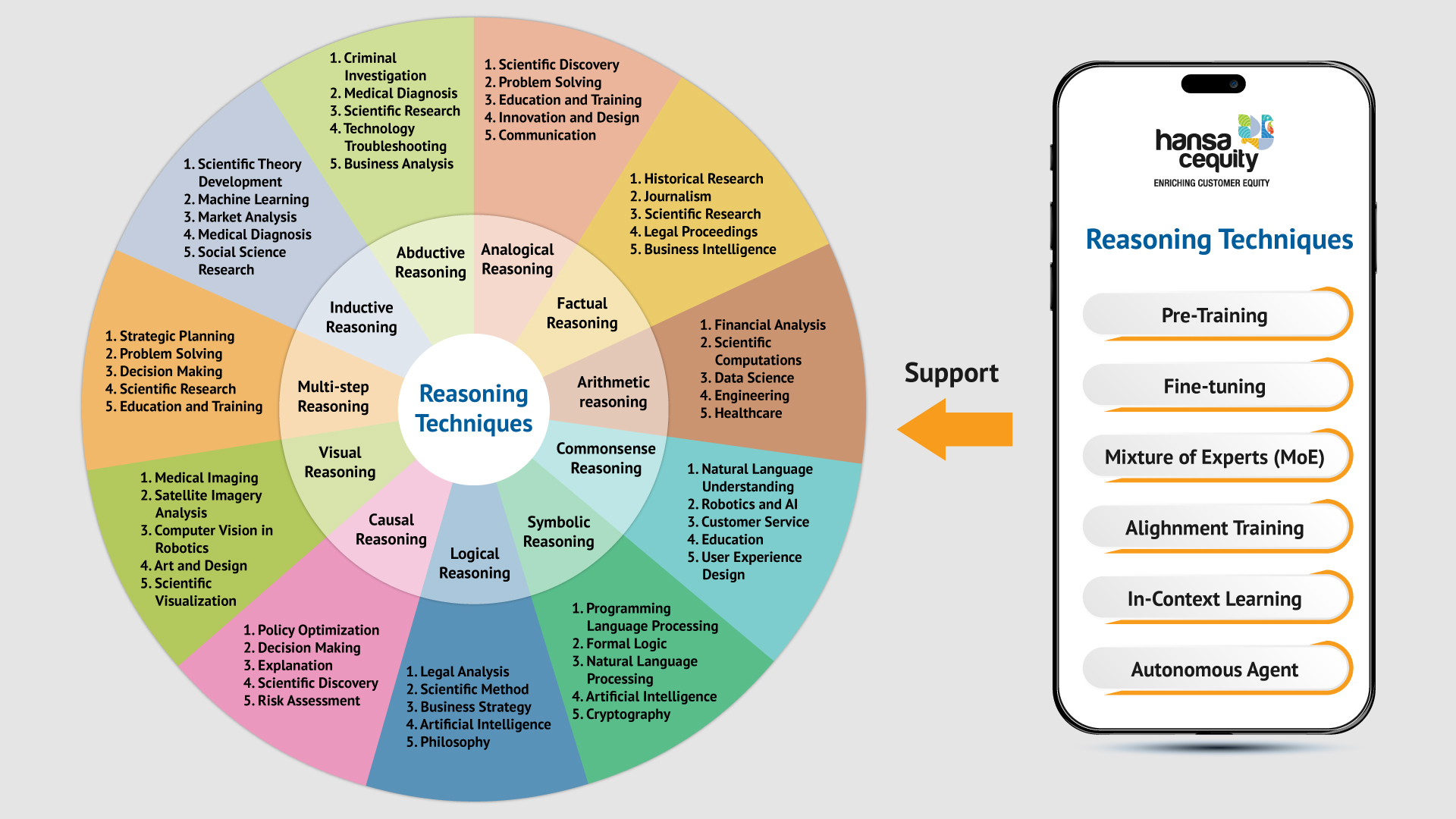The evolution of Large Language Models (LLMs) has been one of the most transformative developments in artificial intelligence. Traditionally, these models excelled at generating human-like text, summarizing information, and answering questions. However, they often struggled with tasks requiring deeper reasoning, contextual understanding, and multi-step problem-solving. Recent advancements in reasoning models have significantly enhanced LLMs’ ability to provide relevant, contextually accurate responses—ushering in a new era of AI applications. For data science professionals, these improvements are particularly impactful, as they unlock new possibilities for automation, decision-making, and innovation.
This article explores how reasoning-enabled LLMs add relevance and context to prompts, their implications for data science workflows, and the potential use cases that can benefit from these advancements.
The Role of Reasoning in LLMs
Reasoning is the ability to process information logically, infer relationships between concepts, and arrive at conclusions based on available evidence. For LLMs, reasoning is not just about generating text—it is about understanding the “why” behind a query and providing outputs that reflect structured thought processes. Recent breakthroughs in reasoning models have been driven by techniques such as:
- Chain-of-Thought (CoT) Prompting:
This approach allows LLMs to break down complex problems into sequential steps rather than attempting to solve them in a single pass. By mimicking human thought processes, CoT prompting improves the model’s ability to handle multi-step reasoning tasks like mathematical problem-solving or logical deduction. - Rationale Verification:
Advanced LLMs now incorporate mechanisms to verify their own reasoning steps. This self-checking process ensures that intermediate steps align with the final output, reducing errors and enhancing trustworthiness2. - Contextual Embedding:
Modern LLMs are better equipped to interpret nuanced prompts by embedding contextual information into their outputs. This means they can adapt their responses based on domain-specific requirements or user intent1. - Multi-modal Integration:
The ability to reason across multiple data types—such as text, images, or graphs—has expanded the scope of LLM applications beyond natural language processing into areas like robotics and visual analytics.
These capabilities are particularly valuable for data science professionals who often deal with complex datasets, ambiguous queries, and decision-making under uncertainty.
Adding Relevance and Context to Prompts
One of the most significant improvements in reasoning-enabled LLMs is their ability to understand and respond to prompts with greater relevance and contextual accuracy. In traditional systems, prompts often needed to be highly specific for the model to generate meaningful outputs. Any ambiguity or lack of detail could result in irrelevant or generic responses. However, modern LLMs can infer missing details from context or ask clarifying questions to refine their understanding.
For example, consider a data scientist asking an LLM for insights into customer churn trends based on historical sales data. A reasoning-enabled model might not only analyze the dataset but also identify patterns (e.g., seasonal trends or correlations with marketing campaigns) that were not explicitly mentioned in the prompt. It could then generate actionable recommendations tailored to the business context.
This contextual awareness is achieved through advanced training techniques that expose models to diverse datasets and reasoning tasks during pretraining and fine-tuning phases12. As a result, LLMs can now handle ambiguous or open-ended queries more effectively than ever before.
Applications for Data Science Professionals

The enhanced reasoning capabilities of modern LLMs have opened up a wide range of applications for data science professionals. These include automating workflows, improving decision-making processes, and enabling advanced analytics across industries.
1. Banking, Financial Services, and Insurance (BFSI)
LLMs have emerged as powerful tools in BFSI by automating tasks like fraud detection and risk assessment while improving customer service:
- Fraud Detection: By analyzing transaction descriptions and account activity patterns, LLMs can detect anomalies indicative of fraud.
- Risk Assessment: Financial institutions use LLMs to evaluate creditworthiness by analyzing financial histories comprehensively.
- Personalized Financial Advice: Models trained on financial data can provide investment recommendations tailored to user objectives and risk tolerance.
2. Automotive Industry
In automotive applications:
- Vehicle Design Optimization: AI-driven simulations analyze aerodynamics and structural integrity.
- Predictive Maintenance: By analyzing sensor data from vehicles, LLMs predict component failures before they occur.
- Autonomous Driving: Hybrid reasoning models enable autonomous systems to interpret sensor data while adhering to driving regulations.
3. Automating Data Analysis
Data exploration is one of the most time-consuming aspects of any data science project:
- Models generate summaries of key trends within datasets.
- They identify outliers warranting further investigation.
- They provide actionable insights by interpreting ambiguous queries like “What factors contributed most to revenue growth last quarter?”.
4. Code Generation and Debugging
Writing efficient code is central to data science workflows:
- Reasoning-enabled LLMs generate Python scripts or SQL queries based on natural language descriptions.
- They debug code by identifying logical errors or suggesting optimizations.
For instance: “Write a function that calculates moving averages from time-series data” results in accurate code accompanied by step-by-step explanations.
5. Decision Support Systems
Data-driven decision-making requires synthesizing information from multiple sources:
- Reasoning-enabled models simulate outcomes based on historical data.
- They generate pros-and-cons lists for different scenarios.
In financial forecasting or supply chain optimization, these capabilities are invaluable.
6. Scientific Research Assistance
Reasoning-enabled models assist researchers by synthesizing findings from multiple papers into coherent summaries or proposing hypotheses based on existing datasets.
Examples of Enhanced Applications
To illustrate these capabilities further:
- Healthcare Analytics:
Hospitals use advanced LLMs to predict patient readmission risks by analyzing medical histories alongside demographic factors. - Retail Optimization:
E-commerce companies analyze customer reviews alongside sales data using LLMs to identify drivers behind product returns. - BFSI:
A bank deploys an LLM-based chatbot capable of answering customer queries about loans while simultaneously detecting fraudulent account activity by analyzing transaction patterns. - Automotive Industry:
Automotive firms leverage AI-driven simulations for vehicle design optimization while employing predictive maintenance algorithms for fleet management.
Challenges and Future Directions
Despite their impressive capabilities:
- Reasoning-enabled models remain sensitive to poorly framed prompts.
- Outputs may require human oversight for critical decisions.
- Ethical concerns around bias persist as these models integrate into high-stakes domains.
Future research will focus on improving multi-modal reasoning capabilities while addressing challenges like transparency and real-time adaptability.
For data science professionals, advancements in reasoning models represent a paradigm shift in how we interact with AI systems. By enabling deeper contextual understanding and logical problem-solving, modern LLMs are not just tools—they are collaborators capable of augmenting human expertise across diverse domains. From automating routine tasks like coding or querying databases to supporting strategic decisions through advanced analytics in BFSI or automotive sectors, these models are poised to redefine what is possible in data science workflows.
Integrating these tools thoughtfully will be key to unlocking their full potential while ensuring ethical use—a challenge as exciting as it is essential for shaping the future of AI-driven innovation.








